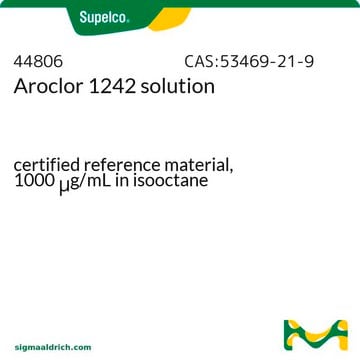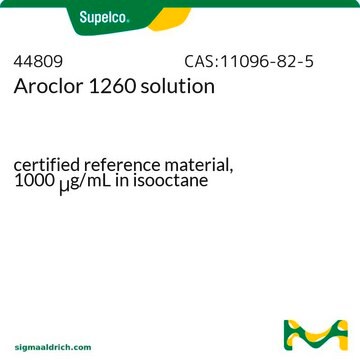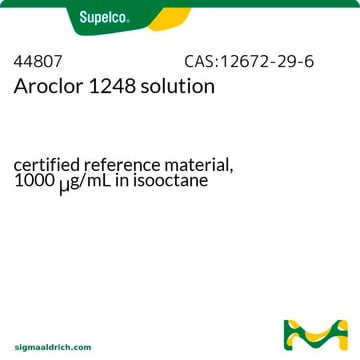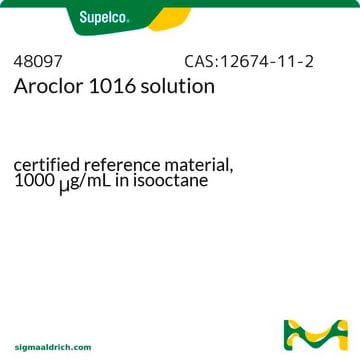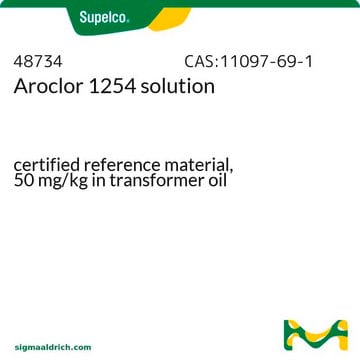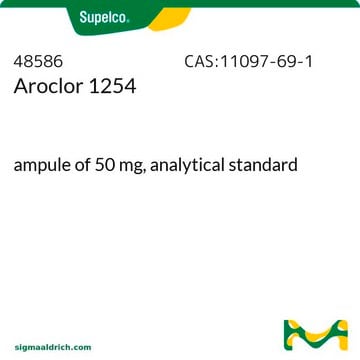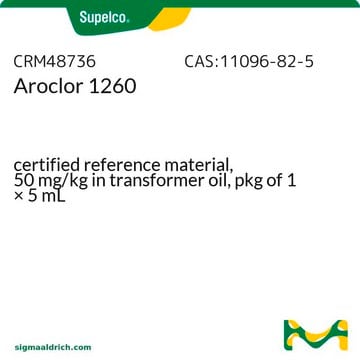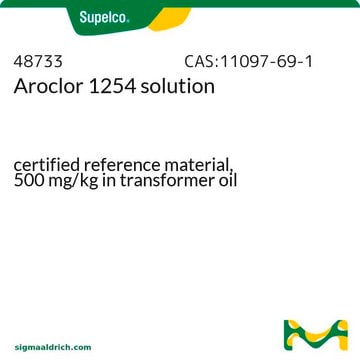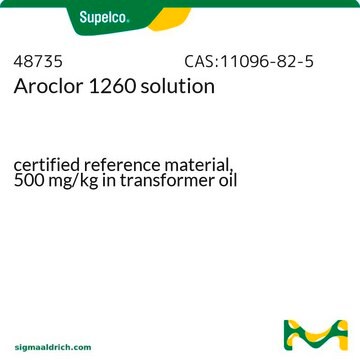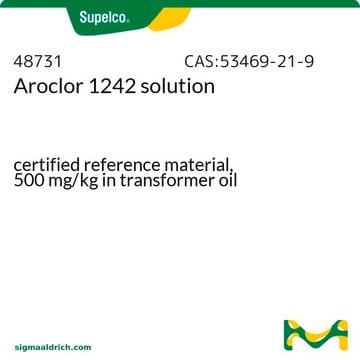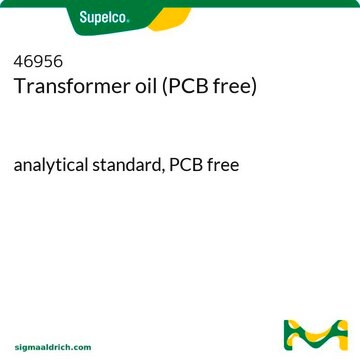44808
Aroclor 1254 solution
certified reference material, 1000 μg/mL in isooctane
Seleccione un Tamaño
42,40 €
Seleccione un Tamaño
About This Item
42,40 €
Productos recomendados
grado
certified reference material
TraceCERT®
Agency
EPA 8082
Línea del producto
TraceCERT®
CofA
current certificate can be downloaded
Características
standard type calibration
envase
ampule of 1 mL
concentración
1000 μg/mL in isooctane
técnicas
HPLC: suitable
gas chromatography (GC): suitable
aplicaciones
environmental
Formato
single component solution
temp. de almacenamiento
2-30°C
cadena SMILES
Clc1c(c(ccc1Cl)c2c(c(ccc2)Cl)Cl)Cl
InChI
1S/C12H5Cl5/c13-8-3-1-2-6(10(8)15)7-4-5-9(14)12(17)11(7)16/h1-5H
Clave InChI
AUGNBQPSMWGAJE-UHFFFAOYSA-N
¿Está buscando productos similares? Visita Guía de comparación de productos
Aplicación
Otras notas
Información legal
Palabra de señalización
Danger
Frases de peligro
Consejos de prudencia
Clasificaciones de peligro
Aquatic Acute 1 - Aquatic Chronic 1 - Asp. Tox. 1 - Flam. Liq. 2 - Skin Irrit. 2 - STOT RE 2 - STOT SE 3
Órganos de actuación
Central nervous system
Código de clase de almacenamiento
3 - Flammable liquids
Clase de riesgo para el agua (WGK)
WGK 3
Punto de inflamabilidad (°F)
10.4 °F - closed cup
Punto de inflamabilidad (°C)
-12 °C - closed cup
Elija entre una de las versiones más recientes:
Certificados de análisis (COA)
It looks like we've run into a problem, but you can still download Certificates of Analysis from our Documentos section.
Si necesita más asistencia, póngase en contacto con Atención al cliente
¿Ya tiene este producto?
Encuentre la documentación para los productos que ha comprado recientemente en la Biblioteca de documentos.
Los clientes también vieron
Filtros activos
Nuestro equipo de científicos tiene experiencia en todas las áreas de investigación: Ciencias de la vida, Ciencia de los materiales, Síntesis química, Cromatografía, Analítica y muchas otras.
Póngase en contacto con el Servicio técnico